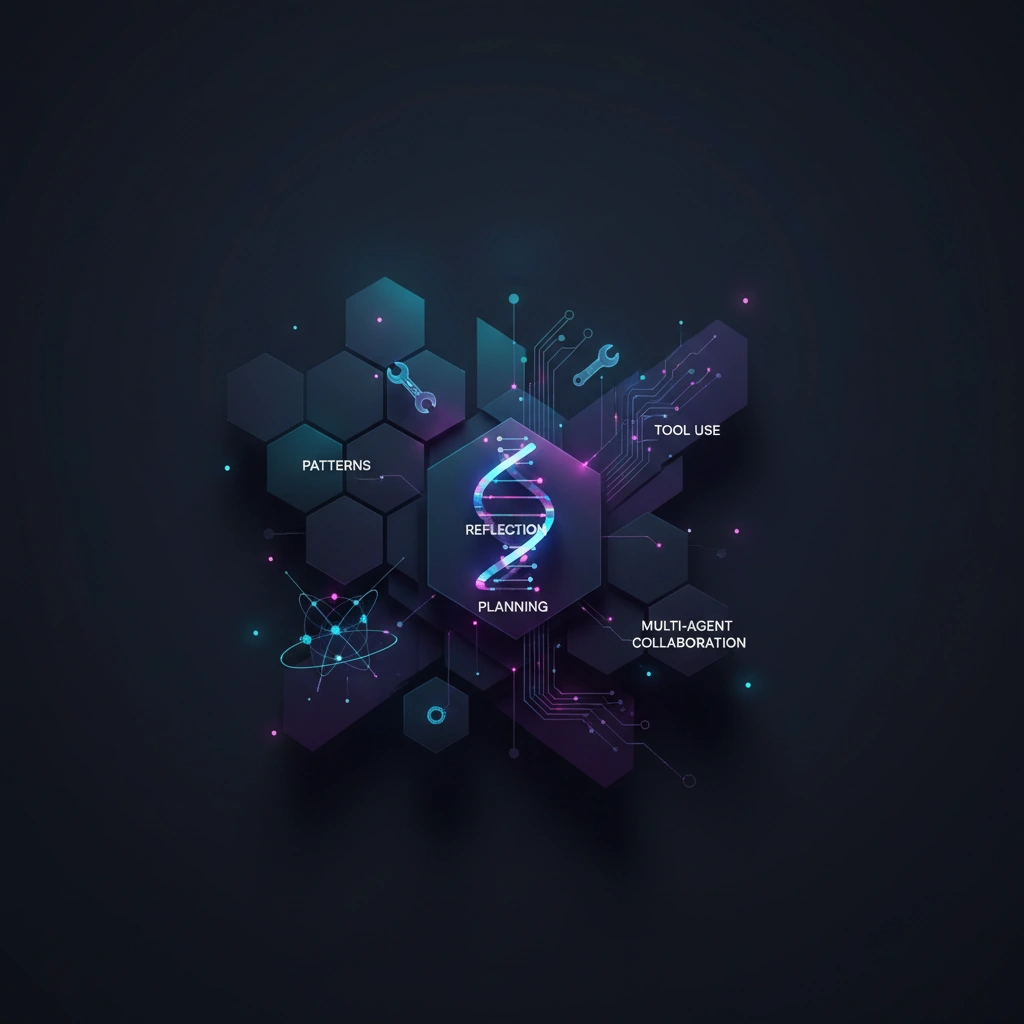Essential Design Patterns for Building Agentic AI Systems
A technical deep dive into architectural patterns for building autonomous AI agents, exploring reflection, planning, tool use, and multi-agent collaboration patterns with detailed flow diagrams and implementation guidance.

As AI systems evolve from simple question-answering tools to autonomous agents capable of complex reasoning and action, understanding the underlying design patterns becomes critical. Agentic AI represents a fundamental shift in how we architect intelligent systems, moving from passive responders to active problem-solvers that can plan, reflect, and collaborate.
Core Agentic AI Design Patterns
The architecture of effective AI agents relies on several foundational design patterns that enable autonomy and sophisticated decision-making. These patterns form the building blocks for systems that can operate independently while maintaining reliability and control.
Reflection Pattern
The reflection pattern enables agents to evaluate their own outputs and reasoning processes. Rather than producing a single response, reflective agents generate initial outputs, critique them through self-assessment, and iteratively refine their work. This pattern implements a feedback loop where the agent acts as both producer and critic, examining the quality, accuracy, and completeness of its responses before finalizing them.
This approach proves particularly valuable in complex tasks requiring high accuracy. By building self-evaluation into the workflow, agents can catch errors, identify gaps in reasoning, and improve output quality without external intervention. The pattern typically involves prompting the agent to assess its work against specific criteria, then using that assessment to guide revisions.
Planning Pattern
Planning patterns decompose complex objectives into manageable subtasks. Rather than attempting to solve problems in a single step, planning agents break down goals into sequences of actions, evaluate different approaches, and select optimal execution paths. This pattern often incorporates techniques like chain-of-thought reasoning and task decomposition.
Advanced planning implementations may include dynamic replanning based on intermediate results, allowing agents to adapt their strategies as they gather new information. The pattern enables agents to tackle multi-step problems that would overwhelm single-pass approaches, making it essential for applications requiring strategic thinking and long-term goal achievement.
Tool Use Pattern
The tool use pattern extends agent capabilities beyond language generation by integrating external tools and APIs. Agents following this pattern can access databases, execute code, perform calculations, retrieve real-time information, and interact with external systems. This transforms language models from text generators into versatile problem-solvers capable of taking concrete actions.
Implementation requires careful design of tool interfaces, clear specifications of tool capabilities, and robust error handling. The agent must learn when and how to invoke tools appropriately, interpret their outputs, and integrate results into its reasoning process. This pattern bridges the gap between language understanding and real-world action, enabling agents to operate as genuine automation systems.
Multi-Agent Collaboration
Multi-agent patterns distribute intelligence across specialized agents that collaborate to solve problems. Rather than building monolithic systems, this approach creates ecosystems of focused agents, each excelling at specific tasks. A multi-agent system might include researcher agents that gather information, analyst agents that process data, critic agents that evaluate proposals, and executor agents that implement solutions.
Communication protocols between agents become critical architectural considerations. Agents must share context, coordinate actions, resolve conflicts, and aggregate results. Patterns range from hierarchical structures with supervisor agents managing workflows to peer-to-peer networks where agents negotiate and collaborate dynamically.
Flow Control and Orchestration
Effective agentic systems require sophisticated flow control mechanisms. Flow diagrams map out decision points, feedback loops, and conditional branching that govern agent behavior. These workflows define how agents transition between states, when they invoke tools, how they handle errors, and when they seek human input.
Orchestration layers manage the execution of these flows, maintaining state, handling asynchronous operations, and ensuring reliability. This includes implementing timeouts, retry logic, fallback strategies, and monitoring systems that track agent performance and detect anomalies.
Implications for Synthetic Media
These agentic patterns have profound implications for AI-generated content and digital authenticity. Multi-agent systems could coordinate to create sophisticated deepfakes, with specialized agents handling different aspects: one agent planning the narrative, another generating video frames, a third synthesizing audio, and a critic agent ensuring realism. The tool use pattern enables agents to leverage multiple generation models and post-processing tools automatically.
Conversely, these same patterns empower detection and verification systems. Agentic architectures can orchestrate multiple detection models, cross-reference evidence from different sources, and reason about authenticity through multi-step analysis. Understanding agentic design patterns becomes essential for both creating and safeguarding against sophisticated synthetic media.
As AI agents grow more capable and autonomous, mastering these foundational design patterns becomes critical for developers building the next generation of intelligent systems. The architecture choices made today will shape how AI agents operate, collaborate, and impact digital authenticity for years to come.
Stay informed on AI video and digital authenticity. Follow Skrew AI News.



